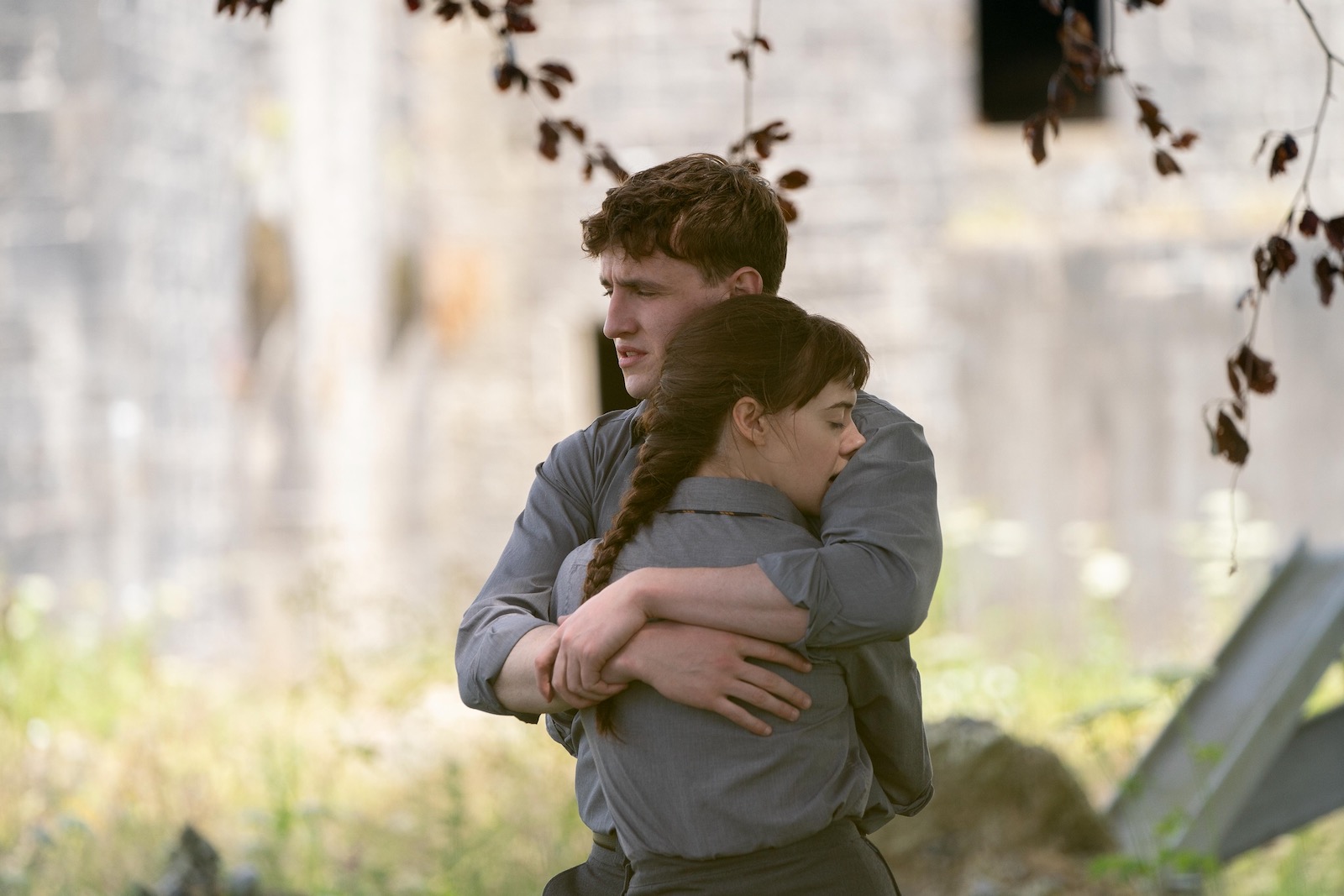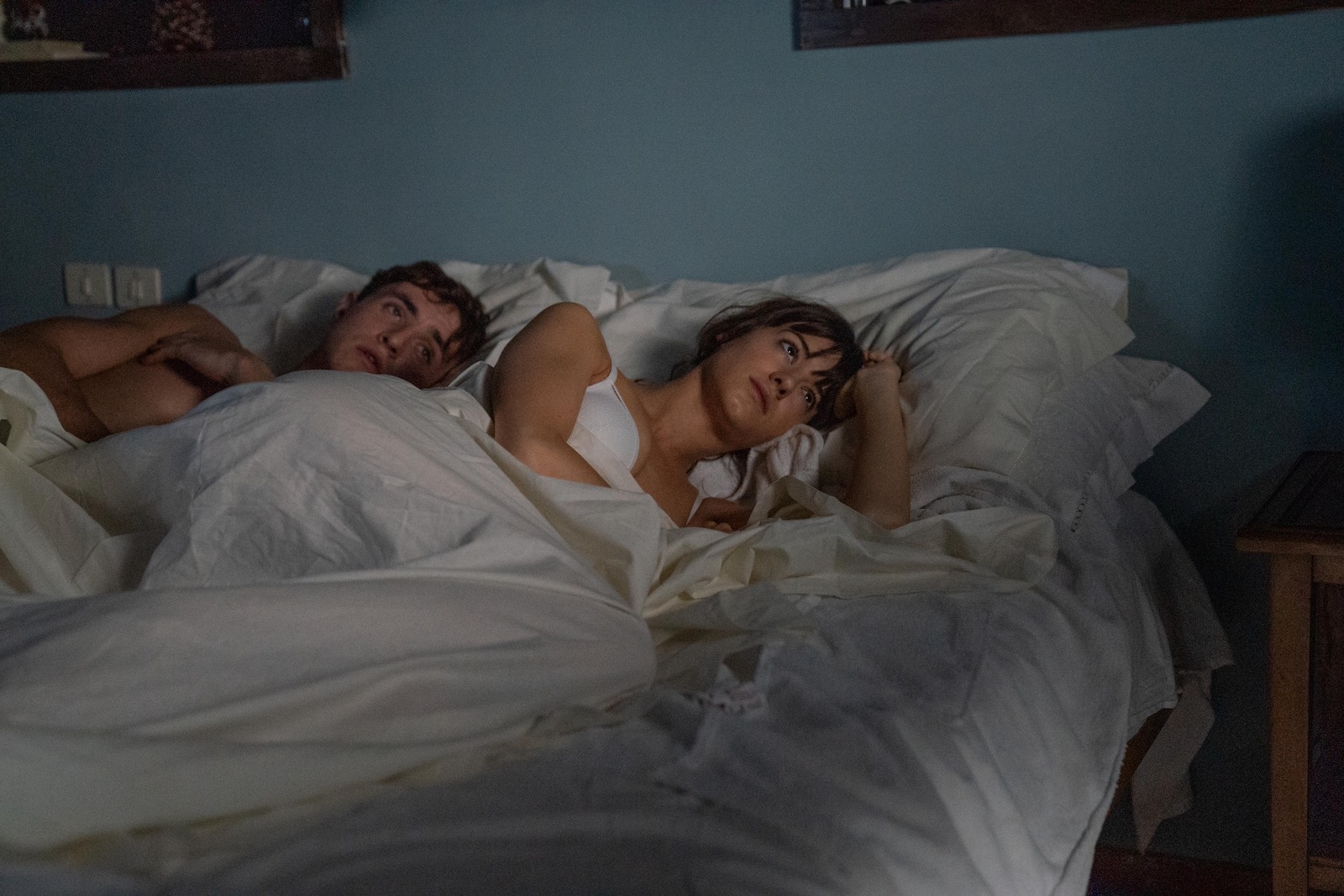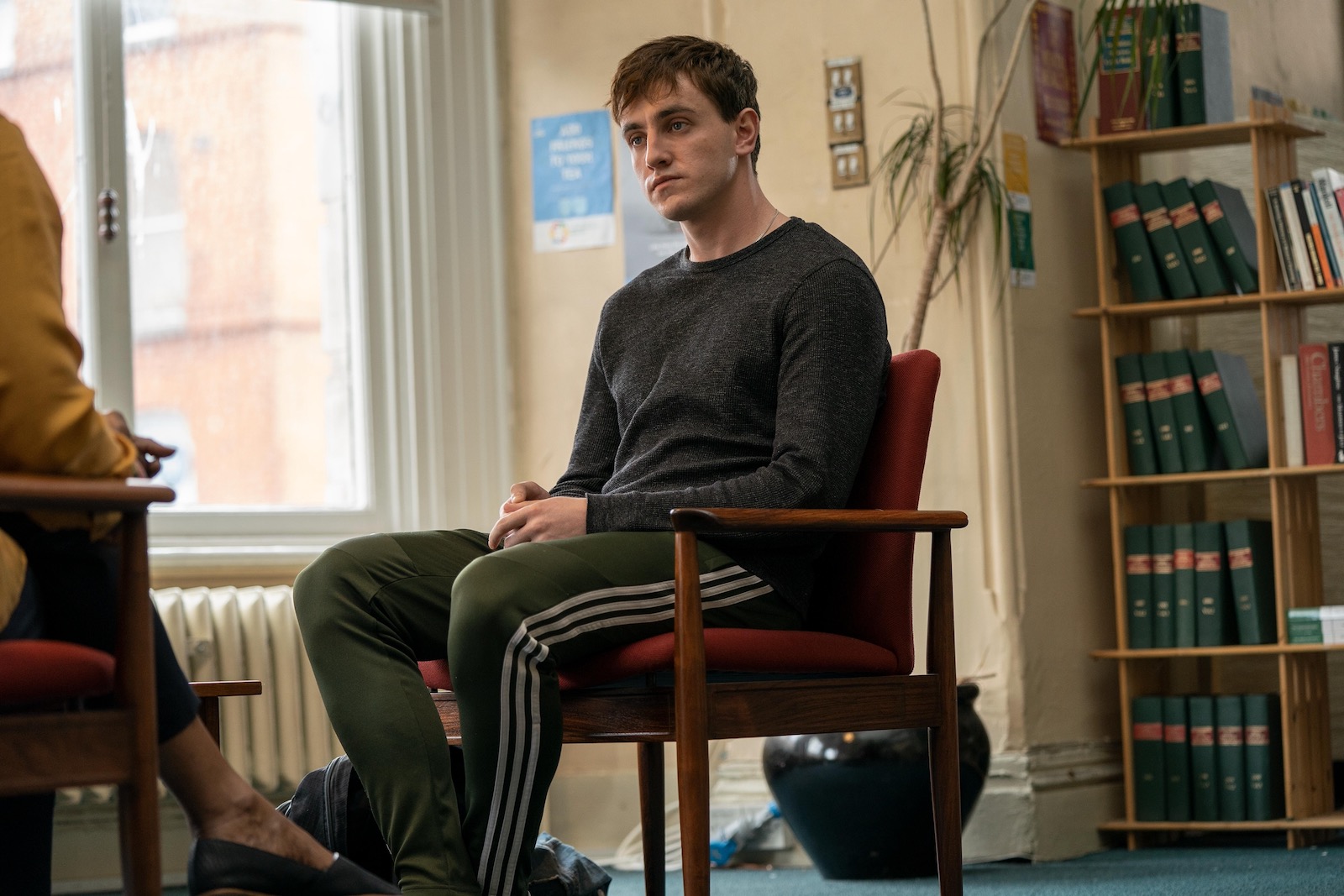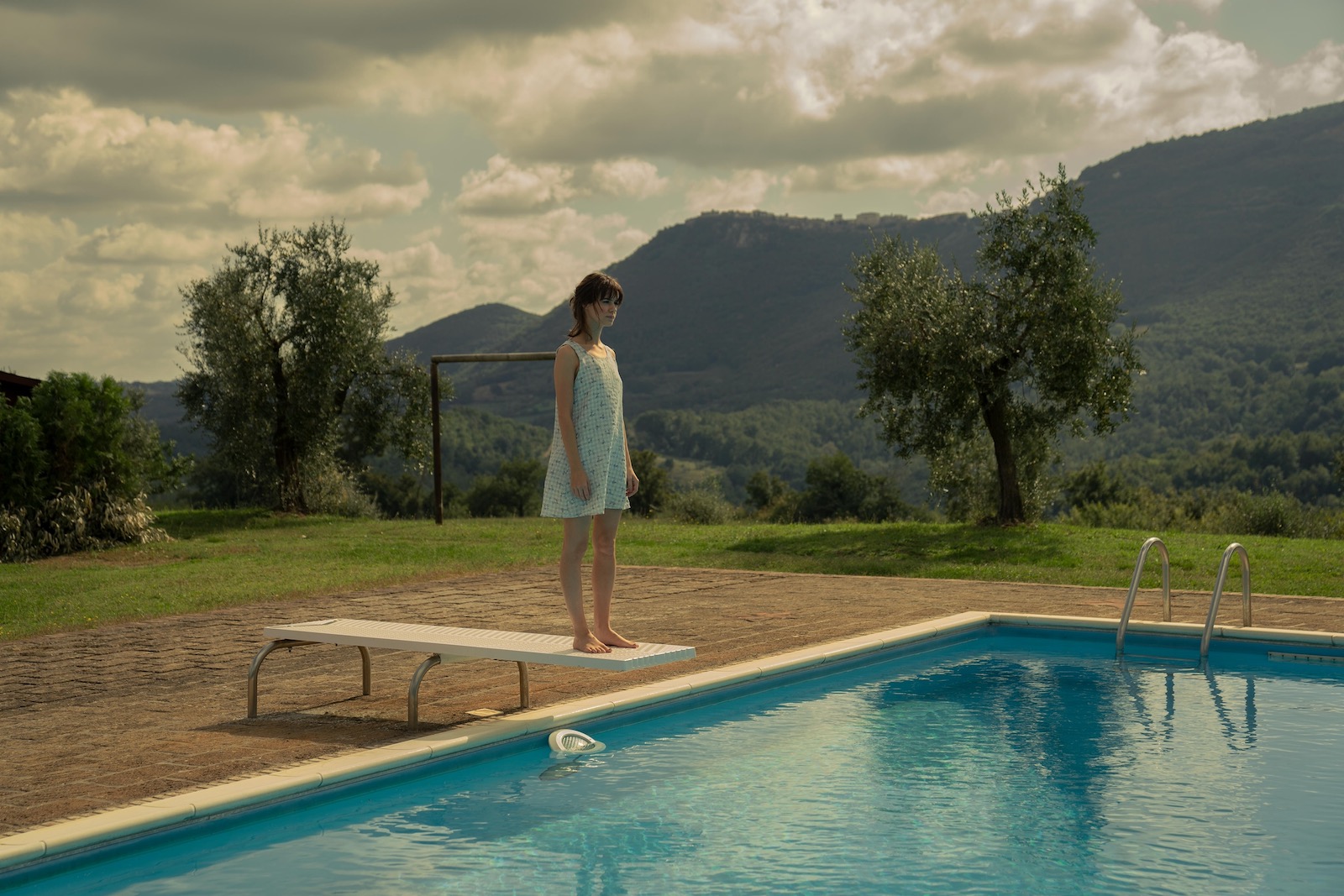In 2013, the Irish writer Sally Rooney, then only twenty-two, was the top debater at the European University Debating Championships. This might seem unusual for a would-be novelist. One assumes that if one were that skilled at public speaking, one would not, subsequently, take to one’s desk in quietude and fictional daydreaming, for years on end. But there are other novelists who have been debaters—Ann Patchett, Ben Lerner, Mary Gordon—and presumably debate wore them out a bit; not one went on to law school. The rhetorical pivot and pounce, the rapidity, the vapidity, the slight violence of forensic discourse (if one barrels ahead with the speed of an auctioneer, one can kick up a helpfully obfuscating dust) might leave one wanting something more substantial; moreover, debate’s hip-hop aspects, its cadences, poetic improv, theatrical slam and jam might tempt one toward a related but different verbal art.
And thus we have Sally Rooney’s second novel, Normal People, which proceeds with the sparsely sketched backstory, rushed pace, and quick retorts of comedic theater, though at its heart it is a love story about brokenness: Normal People became the hit millennial novel of 2019. It follows the relationship of two teenagers: the rich, disputatious, masochistic Marianne and the poor, quiet, popular Connell, as they take up with each other in their final year of high school in Carricklea, Sligo. The narrative then follows them later through their time at university in Dublin, moving effortlessly in and out of both their points of view. In a year that featured a surprising number of literary novels with a focus on high school—Susan Choi’s Trust Exercise, Ann Beattie’s A Wonderful Stroke of Luck, Ben Lerner’s The Topeka School, Colson Whitehead’s The Nickel Boys—Rooney’s was the one that became an international sensation. Perhaps, in part, this is because it posits a romance for romantic agnostics, and thus speaks to many generations at once, though especially her own.
The generations have always sized up one another in broad categorical descriptors. Though much current media attention is given to the millennial disdain for their elders (e.g., “OK, Boomer”), what millennials seem like to baby boomers (who are sometimes their parents) is often discussed more quietly. To generalize sweepingly, and in a way that is not contradicted by Rooney’s work, some of the mutterings—I am only reporting—include the following: millennials seem wedded to ideas of status and conventional success, but they want to “infiltrate” plutocratic institutions as “Marxists” and prized guests; they will deride yet exploit all privilege; raised to be competitive, they find envy is not a form of hate but a legitimate aspect of success-culture and an expression of congratulations. Millennial coveting (cloaked in self-rebuke) is a natural aspect of late-stage capitalism—the cadging of mates and lodging from elders is politically justified filching and may or may not be “Bohemian,” a term few people have ever had a good grasp on. (If you don’t really desire what you take, perhaps the trespass is not actual and certainly not immoral. This is all perhaps better illustrated in Rooney’s first novel, Conversations with Friends, from 2017.) Due partly to smartphones, millennials are essentially suburban, no matter where they have actually grown up. They have no authentic counterculture—Is not their use of social media a version of the old-fashioned Christmas card letter?—and thus secret self-harm such as cutting (unheard of among boomer youth) has rushed in to fill the vacuum. Para-suicidality has sidled up. For the more aesthetically minded millennial, there is wondrous tattooing that bespeaks an impressive lack of worry that life might be long.
Where are their consolations? All eating is problematic. Their music, unbeknownst to them, is feeble, unoriginal, and repurposed (except if one gives them hip-hop, which pre-dates them). They believe in relationships rather than romance and, even then, the relationships are contracts full of riders, waivers, releases, and other addenda. Millennials are boundary-conscious and cannot be touched by anyone, even on the sleeve, without consent, but with consent will have hook-ups with total strangers and enact desire in frightening postures of BDSM—a term, and maybe even a thing—not to sound too much like Philip Larkin—that I’m quite sure did not exist prior to 1983. Millennials scan behavior and texts for authorial missteps and outdated cultural memes; reading immersively on the author’s terms might be overpowering and fascistic. Harry Potter is let off the hook since it is comfort food (or was, until J.K. Rowling’s gender identity gaffe on Twitter got her into hot water). Harry Potter also gave young millennials the idea that everyone has a superpower that only has to be discovered. Hence the rudderless waiting. Boomers, with no Harry Potter, but only books such as Old Yeller, wherein a boy has to kill his beloved, rabid dog, were assured that they had nothing remotely like a superpower, only an arsenal of mind-wrecking tasks, like shooting your own dog.
Advertisement
Elsewhere among millennials, there is a lingering whiff of Adderall. Millennials speak so quickly, it is no wonder that boomers seem and sound like idiots, even to themselves. Millennials are close to their parents but also quietly blame them for what they (the children) do and are. (Boomers tended to blame their parents for only what their parents did and were. As a rule, boomers and their parents seldom tried to please one another.) Unlike baby-boomers, millennials have a confident understanding of mental illness, pornography, and technology, which in the boomer literary world, it is said, only David Foster Wallace “gets.” (The admirable Generation Z coming up behind the millennials—embodied by the climate activist Greta Thunberg or the Nashville teenagers who, in two hours this past June, organized a 10,000-strong racial justice march—appears more righteously impatient, organized, and outward looking. Again: so it is said—broadly.)
Millennial virtues, to an older eye, include a non-specific gentleness and a deep, unfeigned, and generationally unprecedented acceptance of gender and sexual diversity. They are intolerant of bullying and have a broad definition of its related infractions. They give priority to vulnerability over courage and demand safe spaces. They are the Occupy Wall Street people, but once they occupied it, they appeared, rather endearingly, a little unclear on what to do next. Planning for the future is not a millennial strength. (How could it be? The college of their choice was the future they aimed for; the dull, work-saturated steps from here now to there later are often invisible to them; born to older parents, they did not witness their parents’ laborious professional beginnings.) They say, “No problem,” instead of “You’re welcome”—they are not good liars. They seem like nice people. But not normal. They often seem like nice people who privately are doing terrible things to themselves.
Which brings us to Normal People. (“Normal” in Rooney’s novel means being neither reviled nor admired—the excluded middle of millennial social logic: a beautiful, foreign land to move to someday.) Rooney’s book is written in a direct, barebones style reminiscent of a script—third-person narration, mostly present tense, quick dialogue, perfunctory stage directions, explicit time-markers, a past tense to explain why and where we are in the present. Now that it is a twelve-part, binge-able series imported from the BBC as a Hulu Original and directed by Lenny Abrahamson in the first half and Hettie Macdonald in the second, a viewer can follow along with the book and see how faithful the show is. Rooney herself helped in adapting it, writing most of the script, and the series’s adherence to the novel’s scenes and dialogue is surely a writer’s dream. But it may also be a writer’s nightmare, since the show deepens and vivifies the novel—largely due to two sensitive performances at the helm and beautiful camera work. The series portrays states of mind much better than the novel does. Rooney is not likely to hear from viewers that “your book was better,” at least not very often or accurately, but she also may not care a whit.
The long love affair between damaged rich girl Marianne and her friend Connell, the son of the cleaning woman who works in Marianne’s household, is put forth as a series of attachments, disruptions, and re-attachments: everything they are alert to in the world conspires to make their love—dare they call it that?—inconvenient. What they discover between themselves is a true young marriage, though the nature of their society and their personalities won’t allow them to have it easily. How interesting to contrast this with the circumstances of Lorraine, Connell’s mother, who never had a young marriage, but at seventeen became a young mother anyway and took to housecleaning to raise her boy. She sees that the bond Marianne and Connell have is rare and to be valued, even if they do not quite know what to do with it themselves and make unnecessary mistakes (some based on misunderstandings about money or concerns about the opinions of peers—Is what they have too sacrosanct to be revealed to their friends?).
The storyline, then, is full of emotional boom and bust, having little more eventfulness than the Dan Hicks song “How Can I Miss You If You Won’t Go Away.” Rooney throws small, surmountable obstacles in the lovers’ path, but they are too young to realize that a little gravel is not a wall. When one of them goes back to Carricklea, the other remains in Dublin. And vice versa. They are constantly leaving each other so the narrative can have them meet up again. Their love is both a sacred space—it can’t be successfully integrated into the rest of the world—and a disposable arrangement. Because of the flimsiest misunderstandings, they back away from each other to embark on something quite inferior, only to return to each other later. Aside from some statements that personal growth has occurred (we’ll take their word for it), that is pretty much it for plot, over a five-year period. There are some tears. Some cutting. Some drunkenness.
Advertisement
But it is heaven to watch. Connell is played by Paul Mescal, a trained Irish stage actor who strongly resembles Michelangelo’s David, but is especially skilled at giving Connell’s inner confusion expression on his face, something ordinary marble cannot do and which even Rooney’s novel didn’t much bother with. Marianne is played by the English actress Daisy Edgar-Jones, who looks like a cross between the young Sean Young and Sally Rooney herself. (Edgar-Jones used Rooney as a vocal coach for her Irish accent.) Edgar-Jones has an ethereal face made for the screen, with dark, round eyes larger than her breasts, ensuring that she maintains a childlike aspect contradicted by her frequent mental bleakness. In the book, Connell thinks of her as looking “like a piece of religious art.” Also like a sleek and thoughtful deer. Also like “a small white flower.” Only at the end of Rooney’s novel does Connell suspect there is a great dark pit in Marianne: “nothing is there, just the terrible dark emptiness of the elevator shaft, on and on forever.” Marianne sees Connell as “wholesome like a big baby tooth.”
These first-rate actors seamlessly, and with great chemistry and concentration, inhabit their characters, and the confident, hypnotic camerawork helps move the narrative along while also knowing when to linger. Connell is filmed both as a bull and as a puppy. He fills a doorway but can also stagger and scurry. Connell’s failure to invite Marianne to the high-school prom (“the Debs”) haunts their tale, but Connell’s anguish over it allows Mescal some of his best dramatic moments. As for Marianne, the camera sneaks up on her, from behind and to the side, as if taking her by surprise. It loves the nape of her neck and the alabaster of her skin. One feels that she is startled to be seen by anyone, but she carries on naturally, only a few gestures betraying self-consciousness. Both Mescal and Edgar-Jones know how to stare moodily out a window whether it has raindrops on it or not.
And the soundtrack does not undermine the look, even if the most stirring song is a cover of Joy Division’s “Love Will Tear Us Apart,” written by Ian Curtis, who hanged himself just before the song’s release in 1980. The lyrics are somewhat untrue to the series’s theme. Love will not tear these young people apart. Love has befallen Connell and Marianne like a magic spell and will not leave them alone. Love is their superpower!—though they don’t fully understand that (a plan for the future not being their strong suit and love being a puzzle). Thus they keep batting the pesky thing away. Sex, they understand. But sex with each other keeps leading them to love. Go figure. The zig and zag of rupture and reconciliation makes Normal People mostly a picaresque and inconclusive romance, but also a millennial photo album.
For better or worse, Connell and Marianne are made to have a lot of balletic and closely miked time in bed, which sometimes makes one worried that the directors are taking advantage of these lovely young people, but it is also here where the characters’ tenderness is best revealed, the surprise of love fully assimilated into sex. Clothes divide them and mark their differences of social class. Garments take them away from each other and nakedness brings them close: they are their true selves without clothes, though Connell keeps his necklace on. Of course, not everyone in life feels that way—some people feel most in disguise when naked. (Marianne is shown later having uninspired, half-clothed sex with others.) But the two of them have great ease in intimacy (and arguably could have used more awkwardness for realism’s sake).
Series co-director Abrahamson said that he tried to shoot scenes with a “delicate watchfulness” and it mostly shows. The world of the film is unforced; the palette is light-filled and natural and does not make too much of the Irish green and rain. (I came to these visuals with great relief after looking at the heavily saturated colors of filmmaker Todd Haynes, who often makes twentieth century America look a little Flemish.) Here the interiors are inviting, airy, but real. During Marianne’s first visit to Connell’s bedroom, she gazes around the place and says, softly and perfectly, “You have a lot of posters.” The cinematography is full of magnified close-ups, long shots, smash cuts, and location shooting that makes the world seem intended for the young, as it probably is, though these particular young people are often so emotionally knotted up, they seem not to know.
The racial casting of this film should not go unremarked. Decisions were made by the showrunners to do some decorative racial casting so that perhaps Ireland would not seem 98 percent white but perhaps only 94 percent. Race is never mentioned in the novel, with the exception of one reference to a James Baldwin book and a deliciously caustic quip by Connell regarding a romantic rival: “Thank god for white moderates. As I believe Dr. King once wrote.” Neither of these references made it to the screen. The show is mute on the subject of race yet decided to offer some visual compensation. On screen, small roles are given to actors of color—a silent young school friend of Connell’s, a first-year college beau of Marianne’s, a classmate whom Marianne verbally smacks down (“annihilates,” it is said) in a debate at the seminar table, a pal in her gang of Trinity friends, a later, thrown-over girlfriend of Connell’s, a moved-on from therapist, and a sadistic Swede (whose whiteness in the novel is graphically described). All of these peripheral characters have few lines and are largely impediments to the narrative progress of the central romance and so must all be rather quickly tossed aside. To not cast people of color at all may be a form of cinematic white flight but to cast them as discardable characters with no stories or reasons of their own is what Toni Morrison complains about in Playing in the Dark: Whiteness and the Literary Imagination (1992), in which she calls for attention to be transferred from “racial object to racial subject.” What may have been thought of on the set as color-blind casting, in front of the screen, for the viewer, is certainly not.
If race were a subject of true interest to these directors (which it wasn’t to Rooney), and if race were not used in the casting as a nervous form of virtue-signaling, something else might have been done. In for a penny, in for a pound: it might have been interesting to cast one of the leads as a person of color and give real dimension to the conversation. Such casting would have given this millennial love a racialized component that would not have overtaken its themes but powerfully underscored them, since love formed by the world but inflected and judged by society—both immediate and at large—is part of the story. As is privilege, and as is loyalty through difference and time. Decorative casting is often a wan diversity move of prideful shame, but here in Normal People, it could have been amplified out of mere decor.
Nevertheless, the production is a triumphant depiction of beauty and homesickness well-suited for our current sheltering in place. One will feel a nostalgia not just for the sweet, mixed-up passion of youth, but also for cities and cigarettes and trains and crowds. Such unanxious pleasures seem now to exist only in the faraway lockbox of memory. Said a seventy-year-old friend of mine: “This show has my number.”
Normal People is streaming on Hulu.






